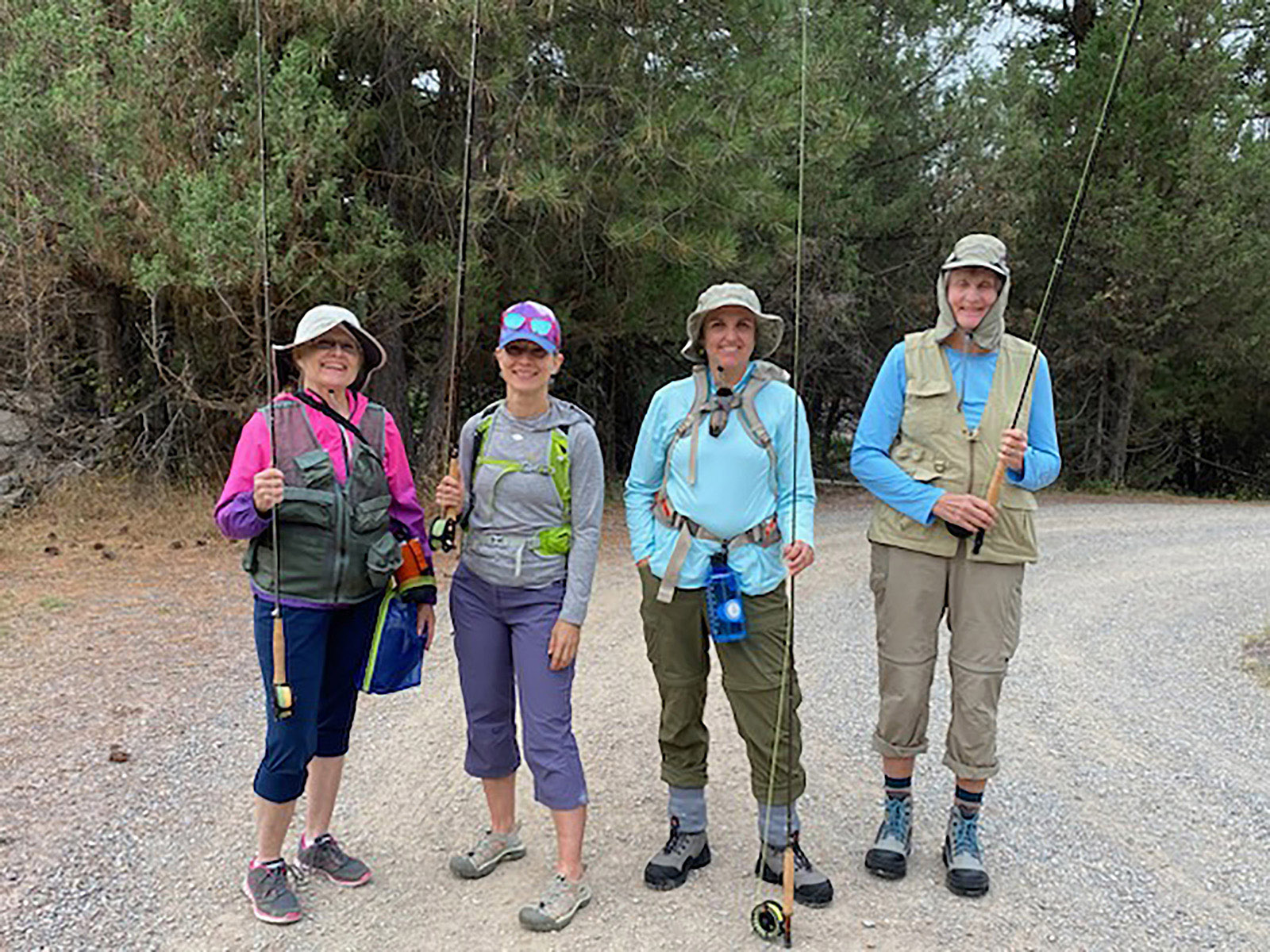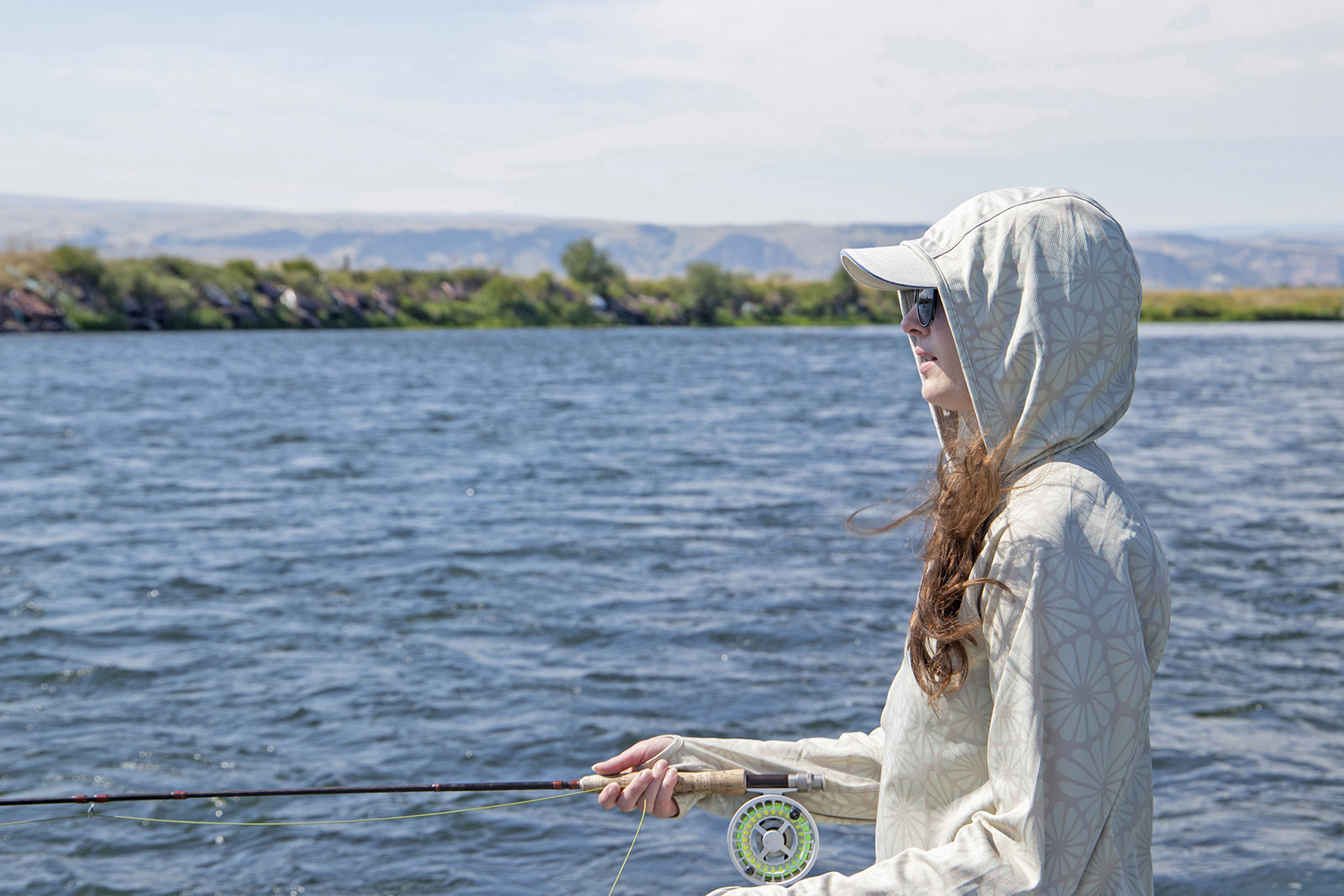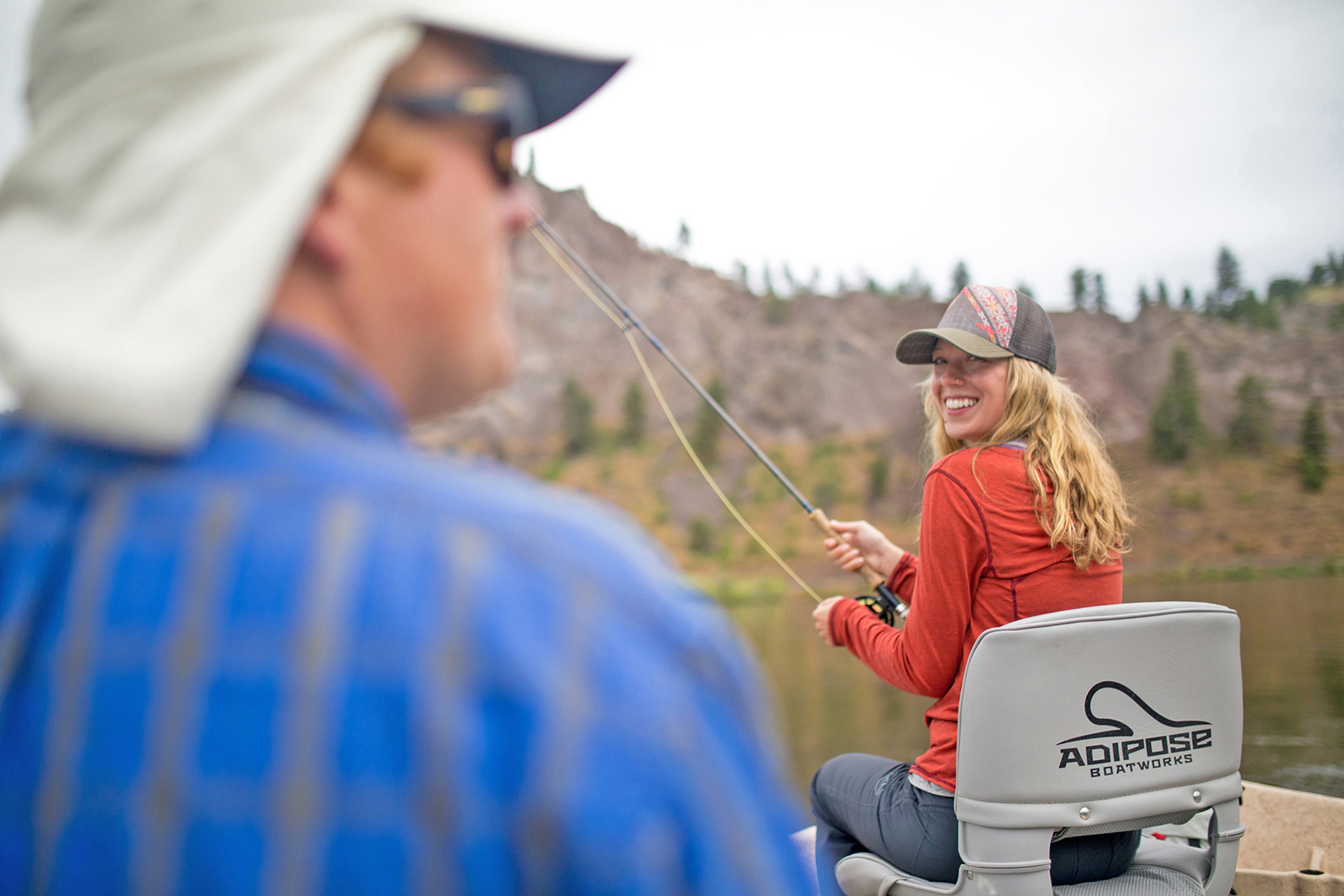Women of the Water


by Katie Thomas
Becoming an outdoors woman in Montana.
Montana is regularly presented to the world as a wild, natural paradise where each of its residents tumbles out of the womb with a fly rod in hand. And that can feel true, especially if you’re one of those rare souls who doesn’t fly fish. I should know; although I was taught at an early age by a father who moved here in the 1960s strictly for the fly fishing, I ended up drifting away from angling and toward paddling. But it’s never too late to pick up a new skillset, and there are plenty of adult-education opportunities when it comes to outdoor activities. For those under the misapprehension that such classes are only for the bros, fear not.
Montana Fish, Wildlife & Parks (FWP) offers an instructional program called Becoming an Outdoors Woman (BOW), which teaches women a variety of outdoor skills in a safe and supportive atmosphere. Activities include fly fishing, archery, kayaking, orienteering, hunting, camp cooking, shotgun and rifle shooting, canoeing, hiking, camping, nature photography, basic fishing, boat-and-trailer handling, and more. Based out of Helena, the statewide BOW program is open to those 18 and over. Some classes are created for adults who have never tried bow-hunting, for example. Others are built for those seeking to improve upon basic skills and meet like-minded individuals.
“Women do fish differently than men, and it’s not a bad thing. They’re enjoying everything, and a lot of times it doesn’t even matter if they catch a fish, it’s just being out there.” — Peggy Temple
BOW was founded in 1990 by Christine Thomas, Dean of the College of Natural Resources at the University of Wisconsin–Stevens Point. An avid hunter and fisherwoman herself, Thomas saw a need for education for adult women in outdoor recreation. So she set up a conference on the matter in 1990 and invited the university, neighboring state agencies, sportsman groups, and the like. Immediately, she began getting calls from women wanting to participate. This spawned the present BOW format, which consists of four multi-course sessions held over three days (typically Friday afternoon through Sunday afternoon), and usually held at locations where women can stay overnight, so as to be fully immersed in the experience.
“The program itself took off really fast,” says Kylie Kembel, Montana’s BOW and Outdoor Skills Coordinator. “That first year, it spread across the nation like wildfire. BOW is now a national nonprofit program, in 38 states and several Canadian provinces.”

BOW came to Montana in 1994 under the leadership of its first coordinator, Liz Lodman. Originally, there was no formal budget for the program, so Lodman brought it in as part of her work in the education division. At that time, BOW paid for itself—meaning, the participants’ fees covered all costs. Now FWP funds the program and offers classes at a more inexpensive rate. Partial scholarships are available, although some workshops are free, and much of the equipment is provided.
Originally geared toward beginners, the program soon grew to include the next level—there were women seeking to further their outdoor experiences, and to find camaraderie in their specific activities as well. The side program “Beyond BOW” was created, in which workshops are offered in more places, and in a shorter timeframe. For example, an ice-fishing class may involve two to three hours of classroom time, and then four hours of hands-on practice.
BOW programming is roughly one-third hunting, one-third fishing, and one-third other outdoor recreation. What are those “others,” you ask? Kembel answers: “Kayaking is a very popular one. So are Map & Compass, Wilderness Survival, Dutch-Oven Cooking—it kind of depends on what state you’re in. Here in Montana, it’s any sort of skill that could be of value in the outdoors.”
“That first year, BOW spread across the nation like wildfire. Now it’s a national nonprofit program, in 38 states and several Canadian provinces.” —Katie Kembel
Well, here in Montana, fly fishing is considered pretty damn valuable. It’s an enormous part of our culture and history as a state, especially in southwest Montana. The benefits of fly fishing range from sustenance to meditation to competition. And on that note, “Women fish differently from men,” says Jim Vashro, a 30-year BOW instructor. “For women, it’s more of an experience, whereas for men, it’s more of a competition. Women tend to enjoy the whole thing; they look up and take note of the birds, the flowers, the bugs. They’re there to learn, to have fun, to cheer each other on, and make friends. They’ll take time out to stop and enjoy a meal—you might even see some vegetables! Most guys subsist on jerky and beer while focusing on how many fish they can catch.”
Peggy Temple, another BOW fly-fishing instructor, agrees. “Women do fish differently, and it’s not a bad thing. You’re enjoying everything—the otters and the eagles, the river rocks, the smells. A lot of times it doesn’t even matter if you catch a fish, it’s just being out there. Or maybe you make that one really nice cast. It’s a different focus. And that’s why I really enjoy getting other gals out… It’s fun, you get to see some amazing things and meet amazing people, and you can take it anywhere in the world.”

For many BOW attendees in this particular part of the world, the experience of fly fishing with a group of women truly has been transformative. As one participant puts it, “I saw the river in a new way, much like an artist or photographer might look at colors, light, contrast, and lines. I looked at how the water moved, where it was fast and slow, where there were pools or places for fish to hole up, for shallows and deep spots. When I landed a little trout, I thanked him and set him free to bring joy to the next fisherwoman.”
Some BOW classes are created for adults who have never tried something like bow-hunting, while others are built for those seeking to improve upon basic skills and meet like-minded individuals.
Another told me, “Getting to learn how to fly fish from BOW’s experienced instructors helped me gain the confidence to go out and try it on my own. They taught me not only the value of observation—from the water movement to the rocks in the stream and the insects—but the value of patience with myself as I learn a new sport. Being an adult learner of the outdoors is hard… but I’ve learned to love being out on the water, connected with the wider, more-than-human community.”
One thing everyone agrees on: the more people who get out and enjoy nature, the better suited they are to protect and watch over our waters. “We feel this program is important for recruitment and retention in outdoor recreation,” says Kembel. And indeed, BOW nurtures women getting outside, whether they’re seasoned fisherwomen or not. You—or the women in your life—may already be an outdoors woman, but either way, it’s nice to support FWP, outdoor education, and other lady anglers. So grab your rod, step into that current, and cast away.
Fish Like a Girl

by Jillian Lukiwski
There’s something I realized while in Montana: women fish differently than men. I don’t mean the technical aspect of casting and drifting, I mean in the way we approach the entire experience.
I’ve fished with my beau Robbie my entire fishing career, and he is production-driven no matter where we are. He wants to catch fish. When we’re on the river, he has been known to say, “Jillian, if this raft is in the water, there had better be a line out.” I thought this was just his way of fishing, but then I started talking to other girls about it and it turns out this is generally the male way of fishing. For women, in general, it’s about trying to catch fish, but it’s also about relaxing, watching wildlife, dropping anchor to watch herons build their nests, swimming, and collecting rocks on the gravel bars.
Yes, I fish like a female and as it turns out, there’s a tribe of female anglers who have been waiting to claim me for what I am. We women fish to catch fish, but also to be immersed in the natural world and to dawdle there a bit, between casts, between catches, to enjoy the wind and the sunshine; we want to baptize ourselves in the elements, drift in and out of a sense of wonder, pause, look up from our fly line where it floats in the water and feel it all. We want to celebrate. We want to ponder the meaning and mystery of life.
We want men to enjoy fishing with us and we want to celebrate with men, as we fish, and share with them the fullness of the joy we feel when we’re on the water.
This is what we found ourselves doing on the river one day, six of us gals in our boats, truly reveling in the magic of the river, enjoying the way we all delighted in the world around us and cheering like a pom-pom squad in short skirts when anyone caught a fish or had a bump or a bite—no matter the fish, no matter the success or failure, we did it with the fullness of joy.
In short, we don’t want to fish like men (though I sometimes say I do when I’ve been reading a lot of Hemingway), we want to fish like women. We want to do it our way and still fit into a lifestyle and world that has always been dominated by affluent white men. We want to have a place there and we want it without having to compromise how we go about doing it and experiencing it. We want men to enjoy fishing with us and we want to celebrate with men, as we fish, and share with them the fullness of the joy we feel when we’re on the water. Be prepared to have a great time, guys, we might even shotgun a beer or two while we’re with you.
In short, I am a girl and I like to fish. If you are a girl and you like to fish, I want to fish with you some day. If you’re a guy and you like to fish, I want to fish with you too, and hopefully you’ll delight in the fact that I fish like a girl.
